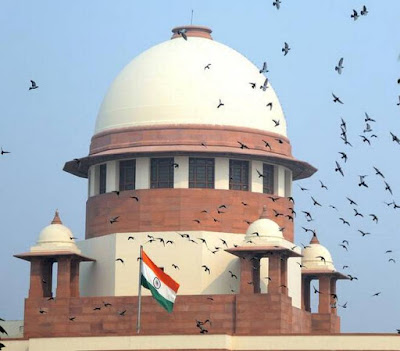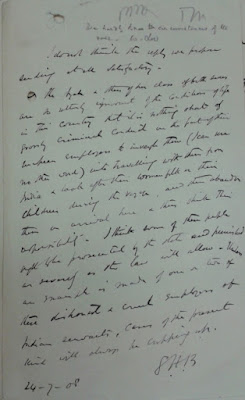economist.com
Free
exchange | Oct 27th, 18:17
WHEREVER
I go these days, at home or abroad, people ask me the same question: what is
happening in the American political system? How has a country that has
benefited—perhaps more than any other—from immigration, trade and technological
innovation suddenly developed a strain of anti-immigrant, anti-innovation
protectionism? Why have some on the far left and even more on the far right
embraced a crude populism that promises a return to a past that is not possible
to restore—and that, for most Americans, never existed at all?
It’s true
that a certain anxiety over the forces of globalisation, immigration,
technology, even change itself, has taken hold in America. It’s not new, nor is
it dissimilar to a discontent spreading throughout the world, often manifested
in scepticism towards international institutions, trade agreements and
immigration. It can be seen in Britain’s recent vote to leave the European
Union and the rise of populist parties around the world.
Much of
this discontent is driven by fears that are not fundamentally economic. The
anti-immigrant, anti-Mexican, anti-Muslim and anti-refugee sentiment expressed
by some Americans today echoes nativist lurches of the past—the Alien and
Sedition Acts of 1798, the Know-Nothings of the mid-1800s, the anti-Asian
sentiment in the late 19th and early 20th centuries, and any number of eras in
which Americans were told they could restore past glory if they just got some
group or idea that was threatening America under control. We overcame those
fears and we will again.
But some
of the discontent is rooted in legitimate concerns about long-term economic
forces. Decades of declining productivity growth and rising inequality have
resulted in slower income growth for low- and middle-income families.
Globalisation and automation have weakened the position of workers and their
ability to secure a decent wage. Too many potential physicists and engineers
spend their careers shifting money around in the financial sector, instead of
applying their talents to innovating in the real economy. And the financial
crisis of 2008 only seemed to increase the isolation of corporations and
elites, who often seem to live by a different set of rules to ordinary
citizens.
So it’s
no wonder that so many are receptive to the argument that the game is rigged.
But amid this understandable frustration, much of it fanned by politicians who would
actually make the problem worse rather than better, it is important to remember
that capitalism has been the greatest driver of prosperity and opportunity the
world has ever known.
Over the
past 25 years, the proportion of people living in extreme poverty has fallen
from nearly 40% to under 10%. Last year, American households enjoyed the
largest income gains on record and the poverty rate fell faster than at any
point since the 1960s. Wages have risen faster in real terms during this
business cycle than in any since the 1970s. These gains would have been
impossible without the globalisation and technological transformation that
drives some of the anxiety behind our current political debate.
This is
the paradox that defines our world today. The world is more prosperous than
ever before and yet our societies are marked by uncertainty and unease. So we
have a choice—retreat into old, closed-off economies or press forward,
acknowledging the inequality that can come with globalisation while committing
ourselves to making the global economy work better for all people, not just
those at the top.
A force
for good
The
profit motive can be a powerful force for the common good, driving businesses
to create products that consumers rave about or motivating banks to lend to
growing businesses. But, by itself, this will not lead to broadly shared
prosperity and growth. Economists have long recognised that markets, left to
their own devices, can fail. This can happen through the tendency towards
monopoly and rent-seeking that this newspaper has documented, the failure of
businesses to take into account the impact of their decisions on others through
pollution, the ways in which disparities of information can leave consumers
vulnerable to dangerous products or overly expensive health insurance.
More
fundamentally, a capitalism shaped by the few and unaccountable to the many is
a threat to all. Economies are more successful when we close the gap between
rich and poor and growth is broadly based. A world in which 1% of humanity
controls as much wealth as the other 99% will never be stable. Gaps between
rich and poor are not new but just as the child in a slum can see the
skyscraper nearby, technology allows anyone with a smartphone to see how the
most privileged live.
Expectations rise faster than governments can deliver and
a pervasive sense of injustice undermines peoples’ faith in the system. Without
trust, capitalism and markets cannot continue to deliver the gains they have
delivered in the past centuries.
This
paradox of progress and peril has been decades in the making. While I am proud
of what my administration has accomplished these past eight years, I have
always acknowledged that the work of perfecting our union would take far
longer. The presidency is a relay race, requiring each of us to do our part to
bring the country closer to its highest aspirations. So where does my successor
go from here?
Further
progress requires recognising that America’s economy is an enormously
complicated mechanism. As appealing as some more radical reforms can sound in
the abstract—breaking up all the biggest banks or erecting prohibitively steep
tariffs on imports—the economy is not an abstraction. It cannot simply be
redesigned wholesale and put back together again without real consequences for
real people.
Instead,
fully restoring faith in an economy where hardworking Americans can get ahead
requires addressing four major structural challenges: boosting productivity
growth, combating rising inequality, ensuring that everyone who wants a job can
get one and building a resilient economy that’s primed for future growth.
Restoring
economic dynamism
First, in
recent years, we have seen incredible technological advances through the
internet, mobile broadband and devices, artificial intelligence, robotics,
advanced materials, improvements in energy efficiency and personalised
medicine. But while these innovations have changed lives, they have not yet
substantially boosted measured productivity growth. Over the past decade,
America has enjoyed the fastest productivity growth in the G7, but it has
slowed across nearly all advanced economies (see chart 1). Without a
faster-growing economy, we will not be able to generate the wage gains people
want, regardless of how we divide up the pie.
A major
source of the recent productivity slowdown has been a shortfall of public and
private investment caused, in part, by a hangover from the financial crisis.
But it has also been caused by self-imposed constraints: an anti-tax ideology
that rejects virtually all sources of new public funding; a fixation on
deficits at the expense of the deferred maintenance bills we are passing to our
children, particularly for infrastructure; and a political system so partisan
that previously bipartisan ideas like bridge and airport upgrades are
nonstarters.
We could
also help private investment and innovation with business-tax reform that
lowers statutory rates and closes loopholes, and with public investments in
basic research and development. Policies focused on education are critical both
for increasing economic growth and for ensuring that it is shared broadly.
These include everything from boosting funding for early childhood education to
improving high schools, making college more affordable and expanding
high-quality job training.
Lifting
productivity and wages also depends on creating a global race to the top in
rules for trade. While some communities have suffered from foreign competition,
trade has helped our economy much more than it has hurt. Exports helped lead us
out of the recession. American firms that export pay their workers up to 18%
more on average than companies that do not, according to a report by my Council
of Economic Advisers. So, I will keep pushing for Congress to pass the
Trans-Pacific Partnership and to conclude a Transatlantic Trade and Investment
Partnership with the EU. These agreements, and stepped-up trade enforcement,
will level the playing field for workers and businesses alike.
Second,
alongside slowing productivity, inequality has risen in most advanced
economies, with that increase most pronounced in the United States. In 1979,
the top 1% of American families received 7% of all after-tax income. By 2007,
that share had more than doubled to 17%. This challenges the very essence of
who Americans are as a people. We don’t begrudge success, we aspire to it and
admire those who achieve it. In fact, we’ve often accepted more inequality than
many other nations because we are convinced that with hard work, we can improve
our own station and watch our children do even better.
As
Abraham Lincoln said, “while we do not propose any war upon capital, we do wish
to allow the humblest man an equal chance to get rich with everybody else.”
That’s the problem with increased inequality—it diminishes upward mobility. It
makes the top and bottom rungs of the ladder “stickier”—harder to move up and
harder to lose your place at the top.
Economists
have listed many causes for the rise of inequality: technology, education,
globalisation, declining unions and a falling minimum wage. There is something
to all of these and we’ve made real progress on all these fronts. But I believe
that changes in culture and values have also played a major role. In the past,
differences in pay between corporate executives and their workers were
constrained by a greater degree of social interaction between employees at all
levels—at church, at their children’s schools, in civic organisations. That’s
why CEOs took home about 20- to 30-times as much as their average worker. The
reduction or elimination of this constraining factor is one reason why today’s
CEO is now paid over 250-times more.
Economies
are more successful when we close the gap between rich and poor and growth is
broadly based. This is not just a moral argument. Research shows that growth is
more fragile and recessions more frequent in countries with greater inequality.
Concentrated wealth at the top means less of the broad-based consumer spending
that drives market economies.

America
has shown that progress is possible. Last year, income gains were larger for
households at the bottom and middle of the income distribution than for those
at the top (see chart 2). Under my administration, we will have boosted incomes
for families in the bottom fifth of the income distribution by 18% by 2017,
while raising the average tax rates on households projected to earn over $8m
per year—the top 0.1%—by nearly 7 percentage points, based on calculations by
the Department of the Treasury. While the top 1% of households now pay more of
their fair share, tax changes enacted during my administration have increased
the share of income received by all other families by more than the tax changes
in any previous administration since at least 1960.
Even these
efforts fall well short. In the future, we need to be even more aggressive in
enacting measures to reverse the decades-long rise in inequality. Unions should
play a critical role. They help workers get a bigger slice of the pie but they
need to be flexible enough to adapt to global competition. Raising the Federal
minimum wage, expanding the Earned Income Tax Credit for workers without
dependent children, limiting tax breaks for high-income households, preventing
colleges from pricing out hardworking students, and ensuring men and women get
equal pay for equal work would help to move us in the right direction too.

Third, a
successful economy also depends on meaningful opportunities for work for
everyone who wants a job. However, America has faced a long-term decline in
participation among prime-age workers (see chart 3). In 1953, just 3% of men
between 25 and 54 years old were out of the labour force. Today, it is 12%. In
1999, 23% of prime-age women were out of the labour force. Today, it is 26%.
People joining or rejoining the workforce in a strengthening economy have
offset ageing and retiring baby-boomers since the end of 2013, stabilising the
participation rate but not reversing the longer-term adverse trend.
Involuntary
joblessness takes a toll on life satisfaction, self-esteem, physical health and
mortality. It is related to a devastating rise of opioid abuse and an
associated increase in overdose deaths and suicides among non-college-educated
Americans—the group where labour-force participation has fallen most
precipitously.
There are
many ways to keep more Americans in the labour market when they fall on hard
times. These include providing wage insurance for workers who cannot get a new
job that pays as much as their old one. Increasing access to high-quality
community colleges, proven job-training models and help finding new jobs would
assist. So would making unemployment insurance available to more workers. Paid
leave and guaranteed sick days, as well as greater access to high-quality child
care and early learning, would add flexibility for employees and employers.
Reforms to our criminal-justice system and improvements to re-entry into the
workforce that have won bipartisan support would also improve participation, if
enacted.
Building
a sturdier foundation
Finally,
the financial crisis painfully underscored the need for a more resilient
economy, one that grows sustainably without plundering the future at the
service of the present. There should no longer be any doubt that a free market
only thrives when there are rules to guard against systemic failure and ensure
fair competition.
Post-crisis
reforms to Wall Street have made our financial system more stable and
supportive of long-term growth, including more capital for American banks, less
reliance on short-term funding, and better oversight for a range of
institutions and markets. Big American financial institutions no longer get the
type of easier funding they got before—evidence that the market increasingly
understands that they are no longer “too big to fail”. And we created a
first-of-its-kind watchdog—the Consumer Financial Protection Bureau—to hold
financial institutions accountable, so their customers get loans they can repay
with clear terms up-front.
But even
with all the progress, segments of the shadow banking system still present
vulnerabilities and the housing-finance system has not been reformed. That
should be an argument for building on what we have already done, not undoing
it. And those who should be rising in defence of further reform too often
ignore the progress we have made, instead choosing to condemn the system as a
whole. Americans should debate how best to build on these rules, but denying
that progress leaves us more vulnerable, not less so.
America
should also do more to prepare for negative shocks before they occur. With
today’s low interest rates, fiscal policy must play a bigger role in combating
future downturns; monetary policy should not bear the full burden of
stabilising our economy. Unfortunately, good economics can be overridden by bad
politics. My administration secured much more fiscal expansion than many
appreciated in recovering from our crisis—more than a dozen bills provided $1.4
trillion in economic support from 2009 to 2012—but fighting Congress for each
commonsense measure expended substantial energy. I did not get some of the
expansions I sought and Congress forced austerity on the economy prematurely by
threatening a historic debt default. My successors should not have to fight for
emergency measures in a time of need. Instead, support for the hardest-hit
families and the economy, like unemployment insurance, should rise
automatically.
Maintaining
fiscal discipline in good times to expand support for the economy when needed
and to meet our long-term obligations to our citizens is vital. Curbs to
entitlement growth that build on the Affordable Care Act’s progress in reducing
health-care costs and limiting tax breaks for the most fortunate can address
long-term fiscal challenges without sacrificing investments in growth and
opportunity.
Finally,
sustainable economic growth requires addressing climate change. Over the past
five years, the notion of a trade-off between increasing growth and reducing
emissions has been put to rest. America has cut energy-sector emissions by 6%,
even as our economy has grown by 11% (see chart 4). Progress in America also
helped catalyse the historic Paris climate agreement, which presents the best
opportunity to save the planet for future generations.
A hope
for the future
America’s
political system can be frustrating. Believe me, I know. But it has been the
source of more than two centuries of economic and social progress. The progress
of the past eight years should also give the world some measure of hope.
Despite all manner of division and discord, a second Great Depression was
prevented. The financial system was stabilised without costing taxpayers a dime
and the auto industry rescued. I enacted a larger and more front-loaded fiscal
stimulus than even President Roosevelt’s New Deal and oversaw the most
comprehensive rewriting of the rules of the financial system since the 1930s,
as well as reforming health care and introducing new rules cutting emissions from
vehicles and power plants.
The
results are clear: a more durable, growing economy; 15m new private-sector jobs
since early 2010; rising wages, falling poverty, and the beginnings of a
reversal in inequality; 20m more Americans with health insurance, while
health-care costs grow at the slowest rate in 50 years; annual deficits cut by
nearly three-quarters; and declining carbon emissions.
For all
the work that remains, a new foundation is laid. A new future is ours to write.
It must be one of economic growth that’s not only sustainable but shared. To
achieve it America must stay committed to working with all nations to build
stronger and more prosperous economies for all our citizens for generations to
come.

















